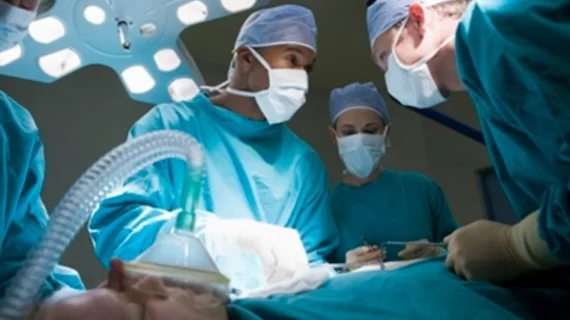Society of Thoracic Surgeons launches new risk calculators for SAVR after TAVR, other key heart surgeries
The Society of Thoracic Surgeons (STS) has launched new risk calculators designed to help heart teams make the best decisions possible when considering patients for surgical aortic valve replacement (SAVR) after a prior transcatheter aortic valve replacement (TAVR), tricuspid valve surgery and multi-valve surgery.
STS risk calculators are known as a go-to resource for interventional cardiologists, cardiothoracic surgeons and any other healthcare providers who manage the care of cardiovascular patients. They can also provide value during shared decision-making sessions between care teams and their patients.
“As cardiothoracic surgery continues to evolve, STS has responded by adding new risk models to guide treatment decisions and benchmark performance,” STS President Jennifer C. Romano, MD, MS, said in a statement. “These new risk calculators include complex surgeries not covered in previous risk models, including surgery after transcatheter procedures, expanding risk assessment to include the large majority of all adult cardiac operations.”
The team behind these new resources reviewed data from the STS Adult Cardiac Surgery Database.
To develop their calculator for SAVR after TAVR, for example, STS specialists reviewed data from 5,500 patients treated from 2012 to 2023. Cardiac surgery after a previous TAVR has become much more common in recent years, the group noted, especially once low-risk TAVR was approved in 2019. The overall rates of mortality and stroke among patients undergoing SAVR after TAVR were 9.3% and 3.8%, respectively. Both patients with and without concomitant coronary artery bypass grafting (CABG) surgery were included.
For the tricuspid valve repair risk calculator, STS specialists reviewed data from more than 13,000 patients treated from 2017 to 2023. The overall predicted mortality risk for isolated repair was 5.5%. The risk associated with tricuspid valve replacement, meanwhile, was 5.7%.
For the multi-valve surgery risk calculator, STS specialists reviewed data from nearly 33,000 patients who underwent multi-valve surgery involving replacement of the aortic valve in addition to replacement or repair of the mitral valve. All patients were treated from 2017 to 2023 with or without concomitant CABG.
Mitral replacement increases the risk of operative mortality, the group wrote, as does adding concomitant CABG.
Risk calculators for aorta surgery, adult congenital heart disease and general thoracic procedures focused on lung and esophageal cancer are also in the works.

